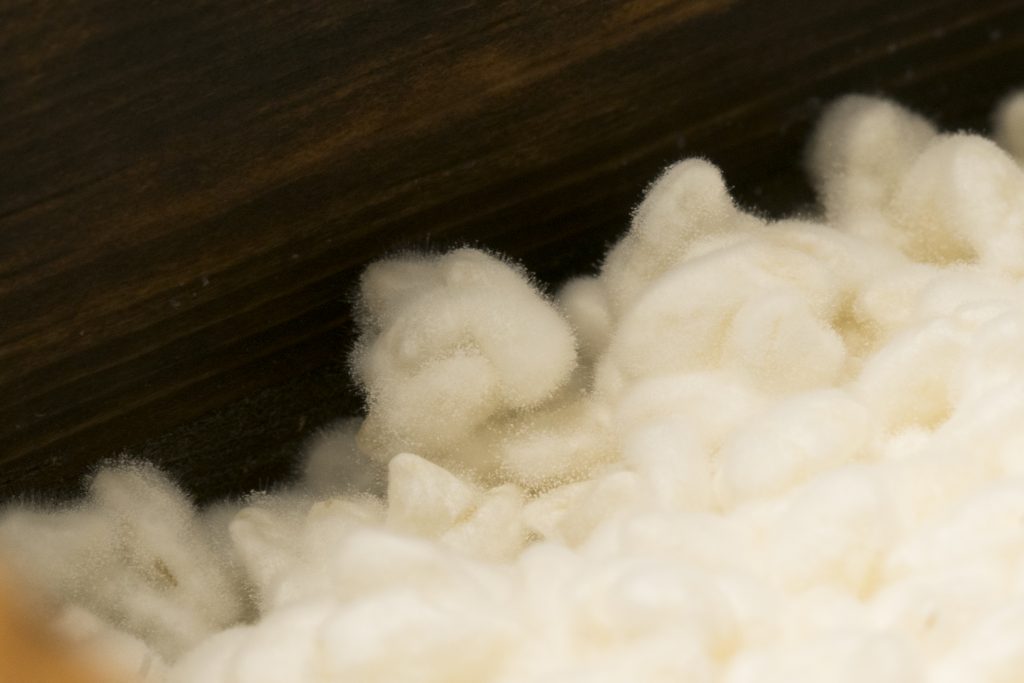
Author: Eva Steinhorst
Date: July 29th, 2021
“Fermentation may have been a greater discovery than fire” the American writer David Rains Wallace once said. Indeed, some things cannot be separated from global human history, and fermentation is one of them. While fermentation culture has blessed the Europeans with sauerkraut, cheese, and beer, it endowed the East Asians with miso, soy sauce, sake and tempeh. In East Asia, all these delicious specialities owe their existence to either one of two special ingredients: the two fungi Aspergillus Oryzae and Aspergillus Sojae. These are also often referred to as Koji. Yet, according to the Chinese characters for Koji, the word actually means rice inoculated with Aspergillus Oryzae. Nonetheless, in the Japanese context for example, the word Koji is used in various meanings, and often refers to both molds. Similarly, in this blog we will use the word Koji as an overarching term for the two Aspergillus fungi.
The history of Koji takes us back millenia, into ancient China, where findings of neolithic pottery from the second millennium B.C show residue of fermented wine made from rice. Koji is said to have first appeared in Japan in the 8th century AD, where it enjoys so much popularity that it is hailed as the national funghi and is celebrated every year on National Fungus day on October 12. According to scientific research, the fungus Aspergillus Oryzae is derived from the naturally occurring species A. Flavus and A. parasiticus. The latter two fungi thrive in the soil and on plants in tropical and subtropical climates. As they are both toxic, it is assumed that through long-term domestication, humans have transformed these wild species into the non toxic fungus A.Oryzae, adapting it to their benefits. While the predecessors of A.Oryzae used to grow on all kinds of plants, A.Oryzae only thrives on grains which is another indicator suggesting its evolution through domestication.

In Japan, domestication of the two funghi takes place in cedar trays, called Koji Buta, that are not washed and constantly reused, which means that after a while, the Aspergillus Oryzae just begins to live in these trays. It is the same as with the cedar barrels that are used for traditional soy and miso production. First, the grains that are to be inoculated with the fungus are polished, which removes the outer husk of the grains, allowing for the fungus to better penetrate the grain. Then, the Aspergillus culture is added to steamed rice or soybeans. This mixture is then placed in a warm or humid place for 50 hours. 18 hours later, the entire surface of the rice will be covered with a complex filamentous structure called hyphae, causing it to turn white. The hyphae simultaneously causes the growth of substrate mycelia which are root-like structures penetrating the grains for the absorption of nutrients, and produces spores that grow upwards, like branches, also called “aerial mycelia''. After the first 24 hours, the koji already releases delicious fragrances that resemble passionfruit and apricot. In total, it takes around 48 hours until the Koji is matured and ready for use for miso or soy sauce production.
Now what is the science behind the growth of this mysterious fungus creating a fluffy snow white landscape on a batch of rice? First of all, the fungus cannot directly absorb the nutrients in the grains, which is why it releases enzymes that allow it to digest the rice, barley, or beans. Koji produces over 50 enzymes, amongst them amylase, protease, and lipase enzymes. Amylase breaks down starch into glucose. The exact process works as follows: Complex polysaccharides are broken down into simple sugars such as maltose, glucose, and oligo sugar. These enzymes can create tastes beyond the taste of sugar. These sugars are also easily fermented into alcohol, which is why Koji is an essential ingredient for sake production. Protease enzymes break down the proteins into the amino acids that they are composed of. The most common amino acid here is glutamic acid. Glutamic acid is essentially what is behind the delicious umami flavour that makes fermented soy products so unique. Meanwhile, Lipase breaks down fat into fatty acids, esters, and alcohols. This is essentially the power of Koji: It can transform plain foods by drawing fine flavours out of their natural components. In doing so, it produces a wide array of aromas that have resemblance with tropical fruits, nuts, honey, and flowers.

Like other fermented foods, Koji has probiotic qualities. Probiotics can restore the balance of the microbes within the gut, which can help the prevention of the inflammation of the gut and other gut diseases. Moreover, Koji may help the body break down foods more efficiently which is beneficial for one’s overall health, as this provides the body with the nutrients it needs to stay healthy. Studies have also found that Koji can even help prevent cancer in the lungs, colon, liver, and stomach.
Jeremy Umanski, author of the book “Koji Alchemy” was not wrong when comparing experimentation with Koji to alchemy. In the culinary world, it seems to be the closest we can possibly get to alchemy. Just as the alchemists believed that magic would help transform matter, the way in which koji fermentation has taken food culture to a new dimension is simply enchanting.
Sources
Product Example: Lemon Shijo Koji